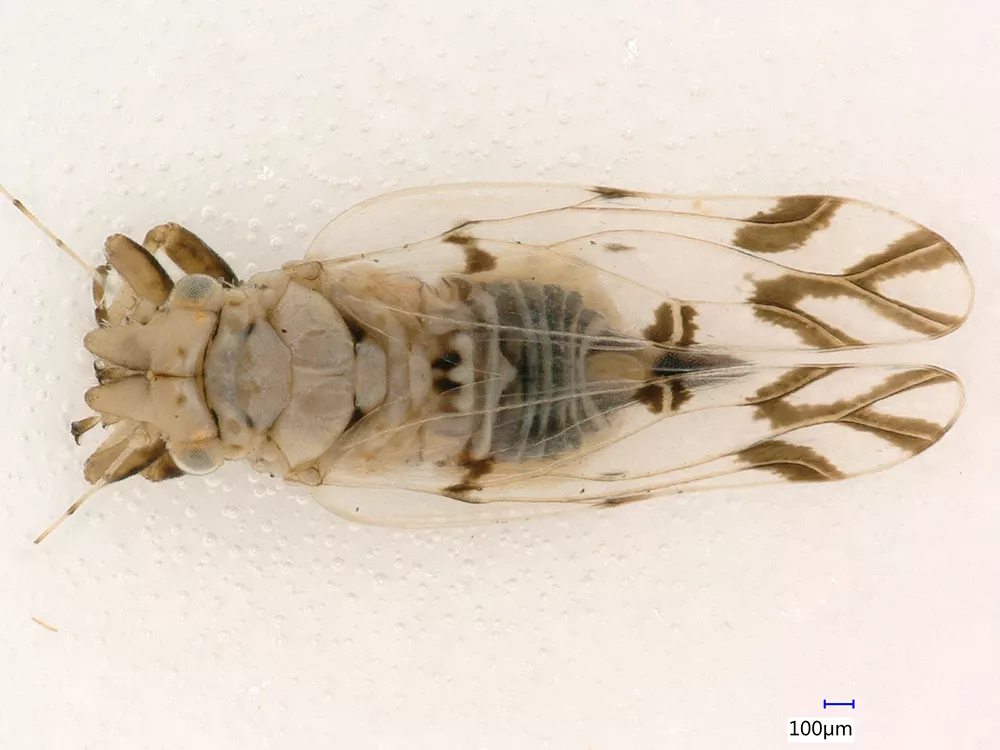The researchers from the Plant Protection Institute of the HUN-REN Centre for Agricultural Research (HUN-REN CAR) and the Plant Protection and Soil Conservation Department at the Major Department for Agriculture at the Fejér County Government Office, rediscovered a scarcely known jumping plant louse species, which was last observed in Hungary at the end of the 1880s. A paper presenting their results was published in the internationally esteemed scientific journal Ecologica Montenegrina.

Jumping plant lice (Psylloidea) represent an economically important group of insects, containing also many significant pest species. From a plant protection perspective, this group includes several important species, as well as some that are very rare. Many species were last observed and collected in Hungary by the world-renown hemipterologist, Géza Horváth.
The now rediscovered Livilla radiata species was last reported by Horváth in 1888. Not found for over 130 years, this species is among the more easily recognisable jumping plant lice thanks to its characteristic wing pattern. Its host plants belong to the Fabaceae family, associated with various Cytisus species. Recently, the researchers collected specimens from a Cytisus plant from the region of Lovasberény, Middle-Hungary. The species is mentioned as endangered in the international literature, and there is no information about the size and number of the Hungarian population.
Due to the new occurrence, the researchers summarised the Fabaceae-associated jumping plant lice in Hungary. Half are rare and seldom observed native species, but the others are alien and invasive, which occur in large numbers on their host plants. They are important pest species of planted ornamental plants from the family Fabaceae in Hungary.